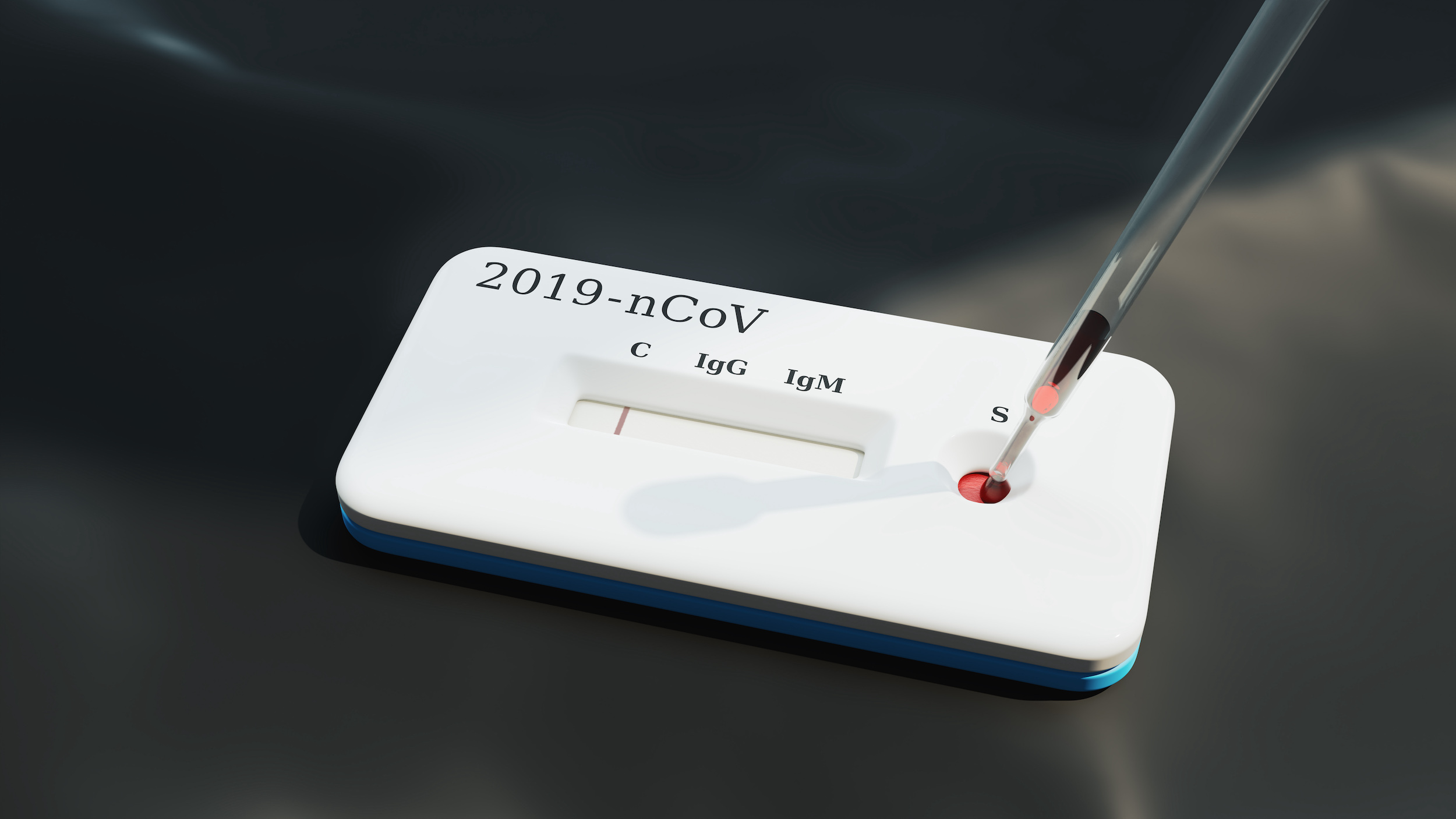How Reliable Are Covid-19 Rapid Tests for Detecting Omicron?
هل يكشف الاختبار المنزلي عن أوميكرون؟.. خبراء يجيبون ويوضحون طريقة استعماله الصحيحة
WSJ
The fast-spreading Omicron variant has made us increasingly reliant on at-home rapid antigen tests to tell us whether we have Covid-19. Yet recent studies raise questions about the tests’ effectiveness at detecting Omicron.
The good news: Rapid antigen tests can definitely detect Omicron. The bad news: Some research indicates that rapid tests may be less sensitive to Omicron than they are to other variants.
That means the tests might be yielding more false negatives, especially in the early days of infection. And preliminary data from one small study suggests that people could be contagious before they get a positive result on a rapid test.
You might not be able to trust a negative rapid-test result in the early days of an infection. It might be necessary to test repeatedly over a few days to get an accurate result. If you are testing before an indoor gathering, you are still taking a risk.
Abbott Laboratories, which makes the popular BinaxNow at-home rapid test, said extensive testing has shown that “BinaxNow continues to detect the Omicron variant at comparable viral load levels as all other variants and the original SARS-CoV-2 strain.” The company also pointed to a recent preprint study from Brigham and Women’s Hospital and Harvard that showed strong performance of BinaxNow with Omicron.
Quidel Corp. , maker of the QuickVue test, said it has conducted tests using live Omicron virus from South African samples that confirmed the test can detect the variant.
So how should you make sense of conflicting information—and what should you do about it?
What the research says
Preliminary data is mixed. Research has looked at different tests in different countries, making it difficult to draw firm conclusions.
One recent preprint, which hasn’t been peer-reviewed, examined the performance of antigen tests with virus samples cultured from Omicron-infected people and from those with other variants. The study found the tests were less sensitive at detecting Omicron. In a separate study in the Journal of Clinical Microbiology, Australian researchers found 10 antigen tests performed as well with Omicron as with Delta.
The U.S. Food and Drug Administration said in late December that “early data suggests that antigen tests do detect the Omicron variant but may have reduced sensitivity.” The statement was based on unpublished laboratory data from research at Emory University supported by the National Institutes of Health.
The study compared rapid-test performance on live virus samples containing the Omicron variant, against samples containing the Delta variant. Researchers found that when they diluted samples of Omicron and Delta, the rapid tests were better able to detect virus in the Delta samples, says Bruce Tromberg, director of the NIH’s National Institute of Biomedical Imaging and Bioengineering, which is funding the Emory study.
If you’ve been feeling ill but getting repeated negative rapid-test results, a separate recent small study conducted in a real-world setting during the Omicron surge may help explain why. It found that rapid tests took a median of three days to detect an infection after a PCR test identified a positive case.
The study included data from 30 people taking daily saliva-based PCR tests and rapid nasal antigen tests in December at five workplaces in New York and San Francisco. All the workers were vaccinated; most were boosted.
The rapid tests produced false negatives for two days following a positive PCR test, even though most people had high-enough levels of virus to infect other people, the study found. At least four people transmitted the virus to others during the three days it took to yield a positive result on a rapid test.
With Omicron, people were very infectious before a rapid test delivered a positive result, says Blythe Adamson, lead author of the study and founder and chief executive officer of Infectious Economics, a public-health consultancy. Dr. Adamson is also an employee at Flatiron Health, an independent affiliate of Roche. Another Roche unit makes PCR tests. One of the co-authors of the paper is the CEO of a company that provided the saliva-based Covid-19 tests used in the study.
Scientists not involved with the study noted that it is possible the positive cases showed up sooner in PCR tests than in rapid tests because the PCR tests were done with saliva, while the rapid tests took nasal samples. Preliminary data from other studies have indicated that Omicron may show up earlier in saliva tests than in nasal swabs.
In general, rapid tests have a lower sensitivity than PCR tests, meaning they produce more false negatives. The FDA authorizes the tests provided they have 80% sensitivity—so they could produce a false negative 20% of the time. Most tests on the market range from 85% to 95% sensitivity.
Why rapid tests might be less sensitive with Omicron
Omicron is hitting when many people have some level of protection as a result of natural infection or vaccination. In people who are vaccinated and boosted, peak concentration of virus—when rapid tests are most likely to detect it—might not occur until three or four days after infection, says Omai Garner, director of clinical microbiology for the UCLA Health system. The delay could result in more false negatives during the first few days, he says.
Another possible explanation: Because it appears that people can spread Omicron with lower levels of virus, people might be infectious before they have high enough levels to be detected in a rapid test, scientists say.
Omicron’s incubation period—the time between when you get exposed to the virus and when you become infectious—appears to be as short as 12 to 24 hours, Dr. Adamson says.
That means someone could receive a negative rapid-test result and become infectious hours later, says Gigi Gronvall, a senior scholar at the Johns Hopkins Center for Health Security.
Tests might also be looking in the wrong place. Sore throats are a common first symptom of Omicron infections, and some scientists speculate that a throat swab could detect the virus earlier than a nasal swab would. The FDA advises against throat swabs, but the practice is endorsed by the U.K.
How should you use rapid tests?
Rapid antigen tests are a useful tool if we are smart about how we use them.
Because the data suggest that rapid tests may be yielding more false negatives at the beginning of an Omicron infection, you’ll have a better chance of getting an accurate result if you wait a day or two after developing symptoms to test, says Katelyn Jetelina, assistant professor of epidemiology at the University of Texas Health Science Center at Houston. If your test is negative, take a second test a day or two later, or get a PCR test if you can. (Easier said than done these days.)
Understand the limitations of rapid tests if you’re considering using them to screen people before gatherings. Rapid tests before a wedding or other large indoor gathering could miss early infections that could be contagious, Dr. Adamson says.
If you have a positive rapid test, you almost definitely have Covid-19, Dr. Gronvall says. False positives are rare, especially when case rates are as high as they are now. You likely don’t need to confirm a positive rapid-test result with a follow-up PCR test, unless an employer or other institution requires it.
الحرة / ترجمات – واشنطن
زادت الشكوك في الفترة الأخيرة بشأن فعالية الاختبارات المنزلية السريعة في الكشف عن متحور “أوميكرون”، إلا أن مسؤولين صحيين دعوا إلى مواصلة استخدامها، فيما قدم خبراء نصائح بشأن كيفية الاستعمال لتحقيق نتائج أفضل.
ويمكن لهذه الاختبارات المنزلية، التي يطلق عليها اختبارات المستضدات، أن تكشف عن “أوميكرون” لكنها وفق بعض الدراسات “أقل حساسية” له، مما يعني عدم إعطاء نتائج إيجابية إلا بعد مرور أيام من التقاط المريض للعدوى.
وها الأمر، وفق صحيفة وول ستريت جرونال، يعني أن هذه الفحوصات قد تعطي نتائج سلبية خائطة في الأيام الأولى من الإصابة، في وقت قد يكون الشخص خلاله مريضا ومعديا، وهو ما يستلزم إجراء الاختبار بشكل متكرر على مدى أيام، للحصول على نتيجة دقيقة.
وقالت إدارة الغذاء والدواء الأميركية (أف دي إيه) في أواخر ديسمبر إن “البيانات المبكرة تشير إلى أن اختبارات المستضدات تكتشف متحور “أوميكرون” لكن ربما تكون أقل حساسية”. وقد استند بيان الوكالة الصحية الفيدرالية إلى بيانات معملية غير منشورة من أبحاث في جامعة إيموري بدعم من المعاهد الوطنية للصحة، وفق وول ستريت جورنال.
وتشير الصحيفة إلى دراسة أخرى، غير منشورة، فحصت أداء هذه الاختبار في الكشف عن إصابة أشخاص بالمتحور الجديد وكذلك متحورات أخرى وتوصلت إلى أنها كانت أقل حساسية بالنسبة لـ”أوميكرون”.
ووجدت دراسة أخرى أن الاختبارات السريعة تستغرق في المتوسط ثلاثة أيام للكشف عن العدوى بعد نتيجة إيجابية لاختبار تفاعل البوليميراز المتسلسل (PCR). وقال عالم لم يشارك في الدراسة إنه من المحتمل ظهور الحالات الإيجابية في اختبارات “PCR” مبكرا عن الاختبارات السريعة، لأن الأولى تجرى باستخدام اللعاب، بينما تؤخذ في الاختبارات السريعة عينات من الأنف.
وتشير البيانات الأولية من دراسات أخرى إلى أن “أوميكرون” قد يظهر في اختبارات اللعاب في وقت مبكر عن مسحات الأنف.
ويقول أوماي غارنر، عالم الأحياء الدقيقة في مستشفى جامعة كاليفورنيا، إنه قد لا تحدث ذروة “أوميكرون” لدى الأشخاص الذين تم تطعيمهم إلا بعد ثلاثة أو أربعة بعد أيام من الإصابة، وهذا التأخير يؤدي إلى نتائج سلبية كاذبة خلال الأيام الأولى.
وهناك تفسير آخر محتمل هو أن حمولة “أوميكرون” الفيروسية قد تكون قليلة وقت العدوى، وليست بالمستوى المطلوب لكشفها بواسطة اختبار سريع.
ويقول الدكتور آدمسون إن فترة حضانة “أوميكرون”، أي الفترة بين التعرض للفيروس والعدوى، قصيرة وهي ما بين 12 إلى 24 ساعة.
وهذا يعني أن الشخص قد يصبح معديا بعد ساعات من الإصابة دون كشف الاختبار لذلك، بحسب جيجي غرونفال، الباحثة في مستشفى جونز هوبكنز.
وللحصول على نتئاج اختبار منزلي دقيقة، تنصح كاتلين جيتيلينا، الأستاذ المساعد لعلم الأوبئة في مركز العلوم الصحية بجامعة تكساس بالانتظار يوما أو يومين بعد ظهور الأعراض، وإذا كانت النتيجة سلبية، يجب إجراء اختبار ثان بعد يوم أو يومين، أو الحصول على اختبار “بي سي آر” إن أمكن ذلك.
ومع ذلك، قالت أشيش جها، عميدة كلية الصحة العامة بجامعة براون لقناة “إيه بي سي” إن الاختبارات السريعة تظل “حجر الأساس لاستراتيجيتنا طويلة المدى لإدارة هذا الفيروس”.
وأشارت إلى أنه “في اليوم الأول من ظهور أعراض أوميكرون قد يكون الاختبار السريع أقل حساسية، ولكن بعد ذلك سيعمل بفعالية”.
وكان مدير المعهد الوطني للتصوير الطبي الحيوي والهندسة الحيوية في المعاهد الوطنية للصحة، بروس ترومبيرغ، قد قال لواشنطن بوست: “حتى مع الأداء المنخفض، ستظل (الاختبارات) تلتقط العدوى، وستساعد الأفراد على العزل أو الحصول على العلاج”.




